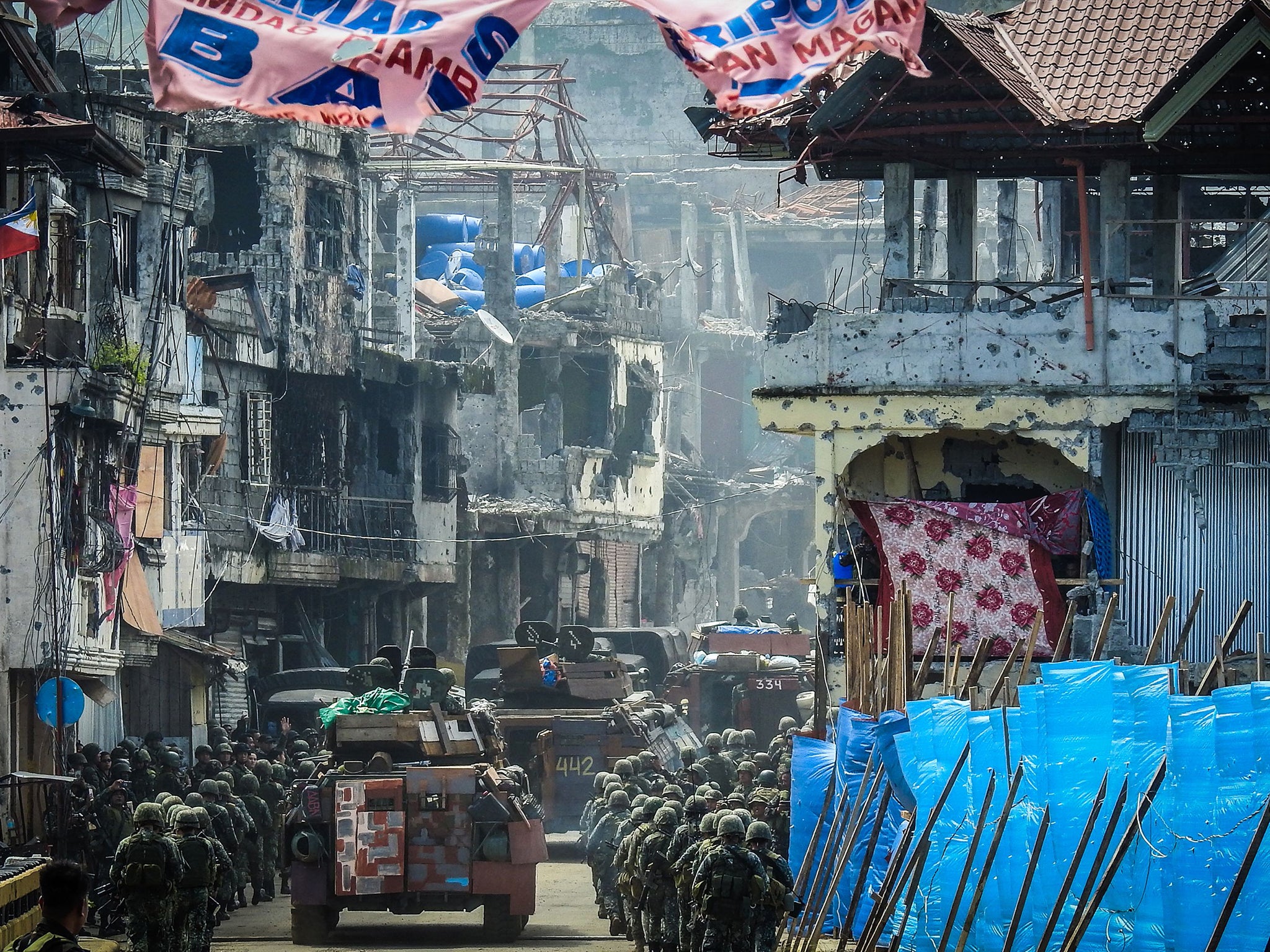Philippines army chief claims women and children are 'shooting at troops' battling Isis-linked rebels
General Carlito Galvez says Christian hostages have been forced to take up arms to fight with the insurgents

Your support helps us to tell the story
From reproductive rights to climate change to Big Tech, The Independent is on the ground when the story is developing. Whether it's investigating the financials of Elon Musk's pro-Trump PAC or producing our latest documentary, 'The A Word', which shines a light on the American women fighting for reproductive rights, we know how important it is to parse out the facts from the messaging.
At such a critical moment in US history, we need reporters on the ground. Your donation allows us to keep sending journalists to speak to both sides of the story.
The Independent is trusted by Americans across the entire political spectrum. And unlike many other quality news outlets, we choose not to lock Americans out of our reporting and analysis with paywalls. We believe quality journalism should be available to everyone, paid for by those who can afford it.
Your support makes all the difference.Filipino troops fighting Isis-linked insurgents on the southern island of Mindanao say they have encountered armed resistance from women and children, the military has said.
Ground forces were braced for higher casualties amid fierce fighting in Marawi City on the island of Mindanao, where the field of battle has shrunk to a small area in a commercial heart which has been infested with snipers and littered with booby traps.
"We are now in the final phase of our operations and we are expecting more intense and bloody fighting.," said Lieutenant General Carlito Galvez, who heads the military in Western Mindanao. "We may suffer heavier casualties as the enemy becomes more desperate."
He added the number of fighters was diminishing and "troops in the field are seeing women and children shooting at our troops".
He said that was why it seemed they were not running out of fighters.
Citing information provided by four hostages who had escaped from the rebels, Gen Galvez said there were some 56 Christian hostages - most of them women - and about 80 male residents may have been forced to take up arms and fight the military.
The fighting was concentrated in an area around a mosque. He said soldiers were taking control of an average 35 buildings a day and at that rate, it could be three weeks before the city was under government control.
More than 800 people have been killed in the battle, most of them insurgents. It began in late May when the militants occupied large parts of the predominantly Muslim town.
Although 90 per cent of the Filipino population is Catholic, Mindanao, which is at the southern tip of the country, is predominantly Muslim and has been a target for jihadists for several years.
These insurgents are under the command of Abdullah Maute and his brother Omarkhayam who are heads of a militant clan known as the Maute group.
It has gained notoriety in the past two years due to its ability to engage the army for long periods.
Under the name Dawla Islamiya, the Maute group has formed an alliance with Isnilon Hapilon, a leader of a pro-Isis faction of another group, Abu Sayyaf.
Gen Galvez said the army's intelligence indicated both Omarkhayam and Hapilon, Isis' anointed "emir" in Southeast Asia, were still participating in the fighting – contrary to intelligence released last month which suggested one or both of them had been killed in an air strike.
The island has been placed under martial law until at least the end of the year and controversial Filipino President Rodrigo Duterte warned that martial law could be extended to the rest of the country if the insurgency spread.
Additional reporting by Reuters
Join our commenting forum
Join thought-provoking conversations, follow other Independent readers and see their replies
Comments